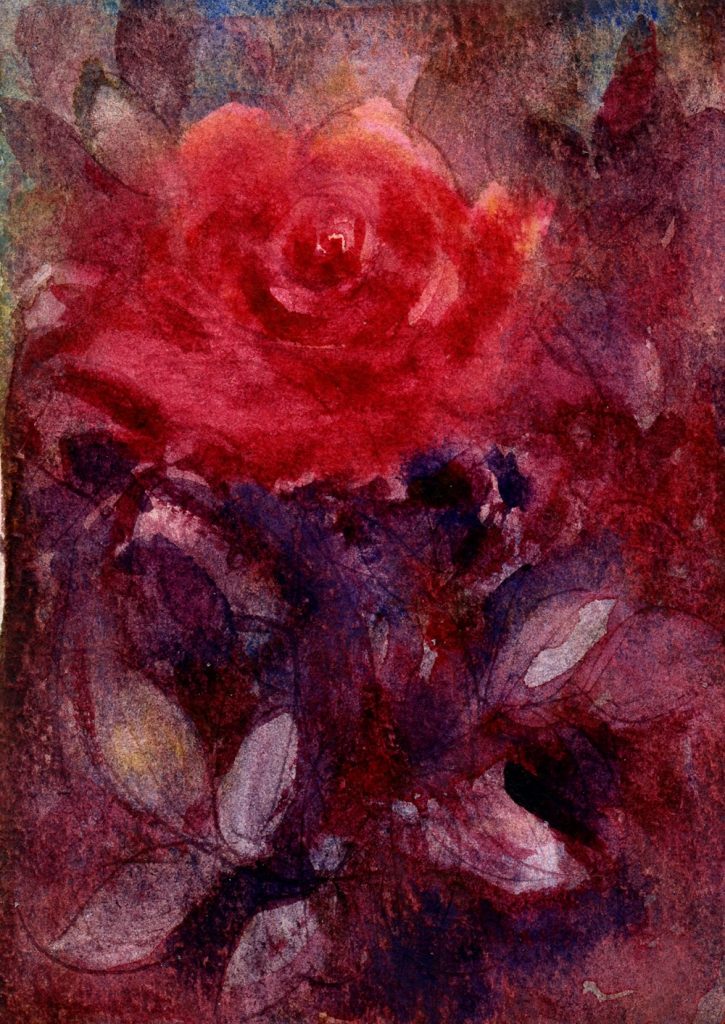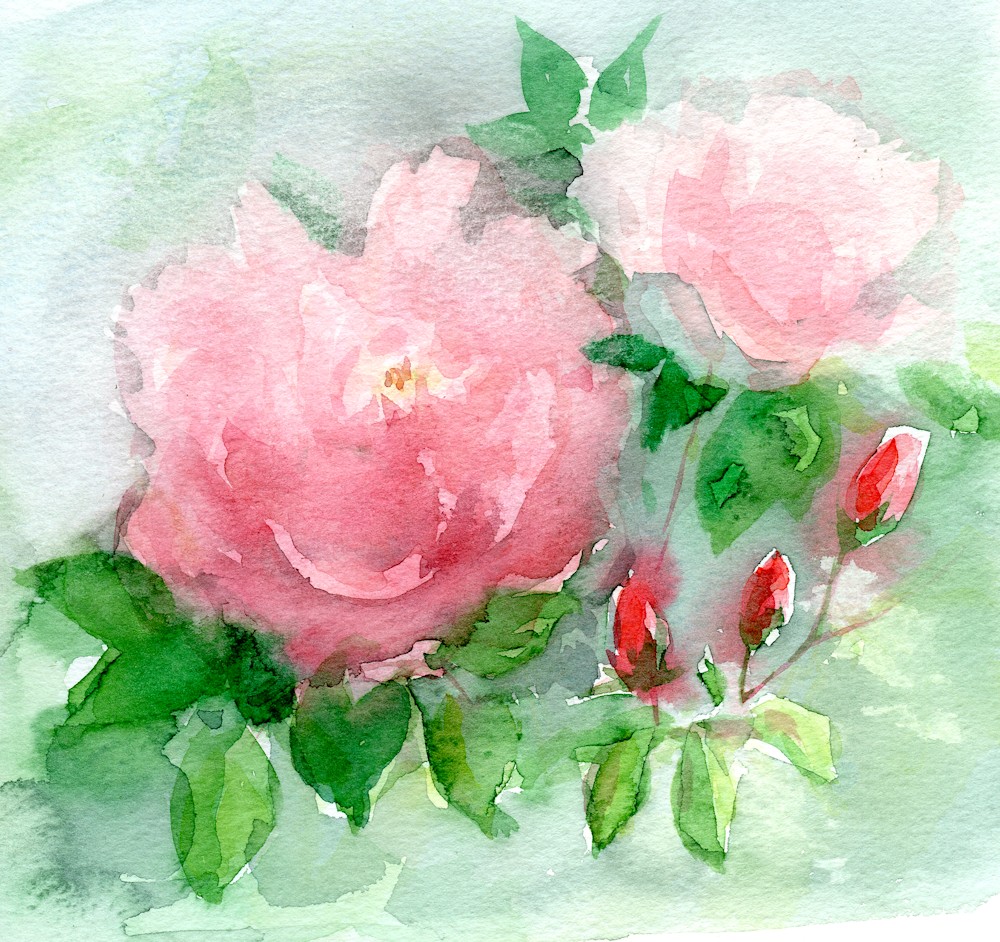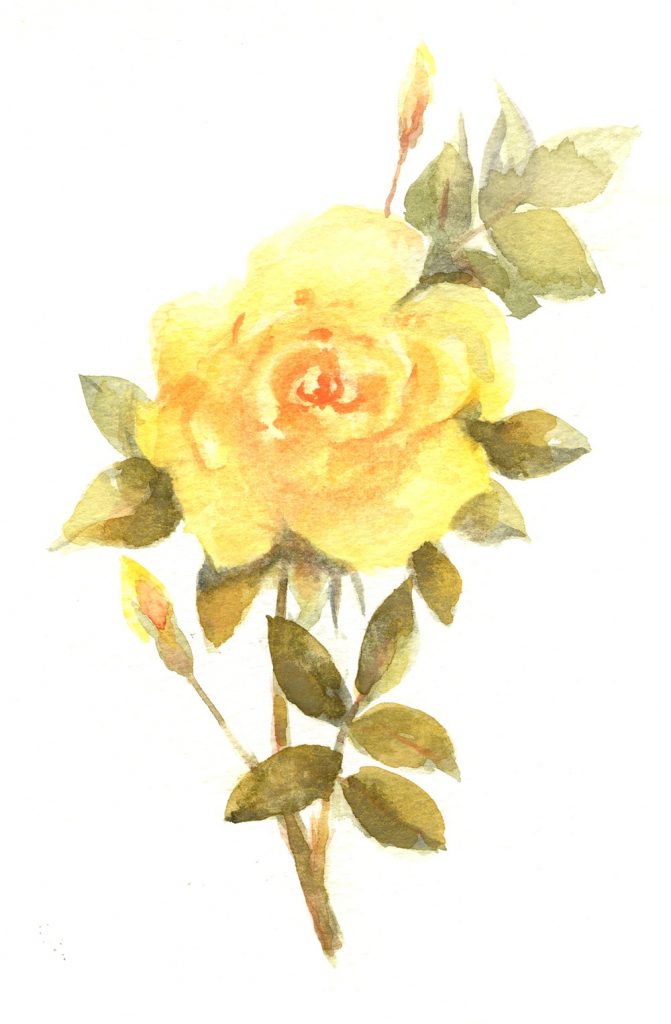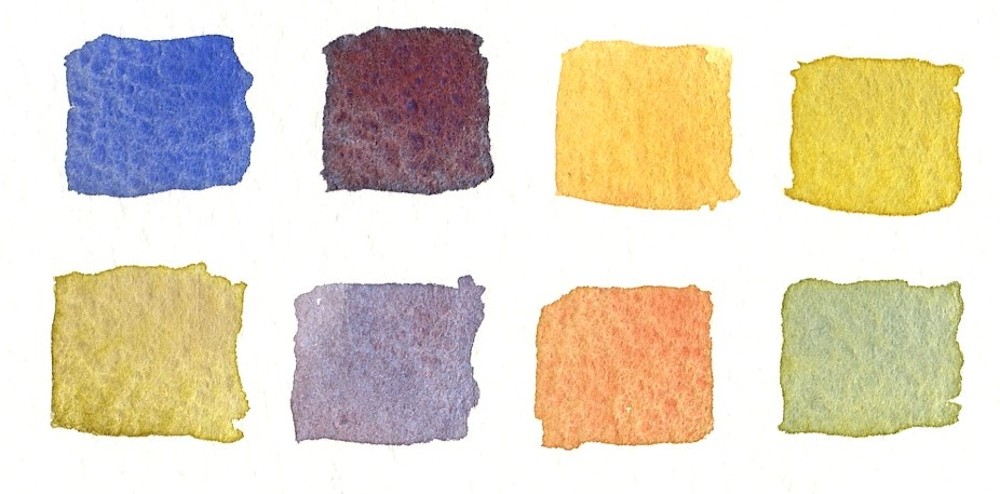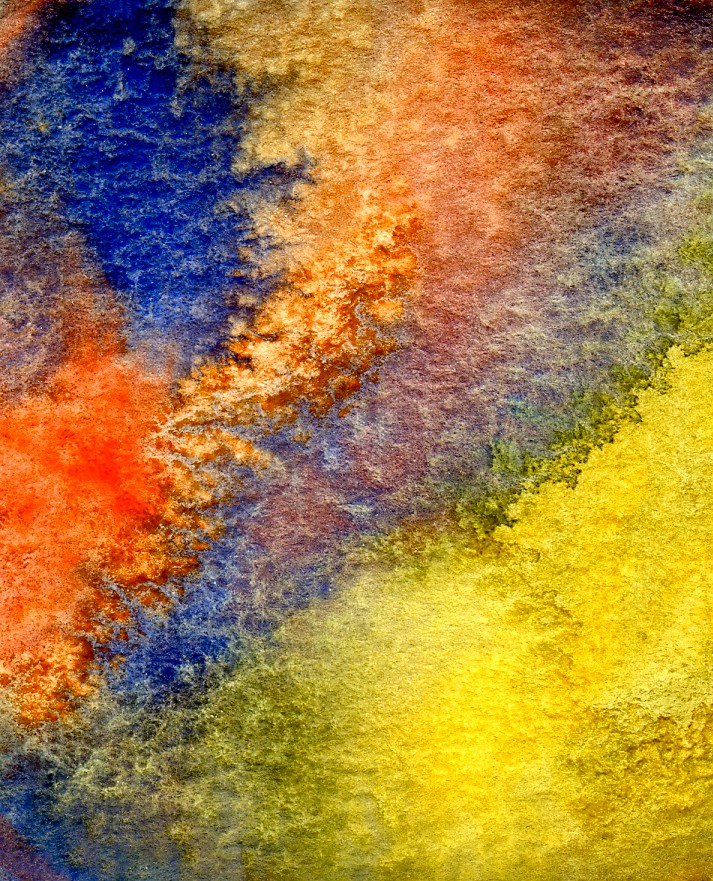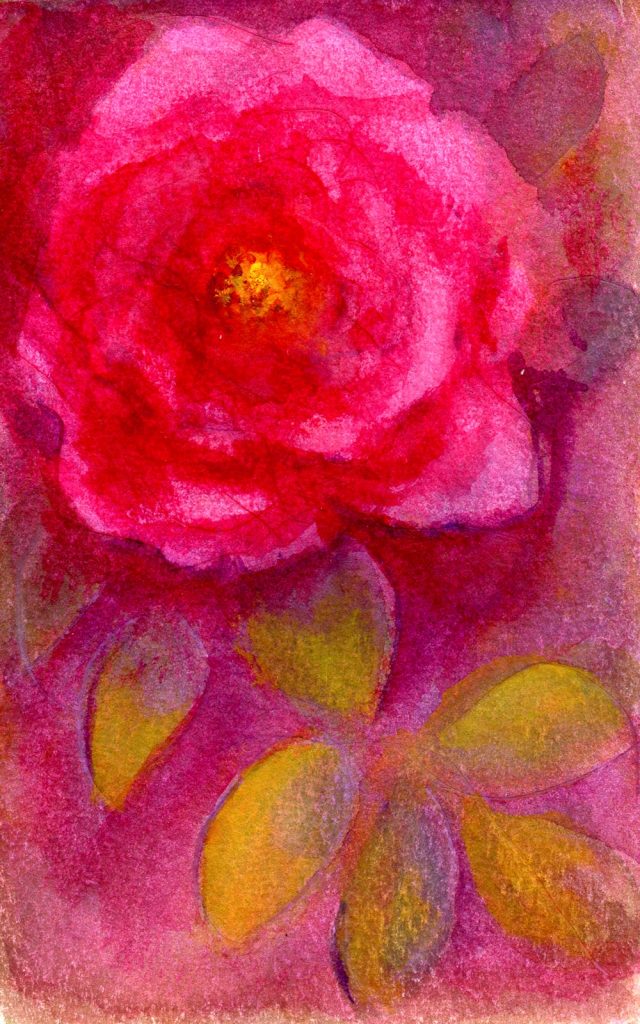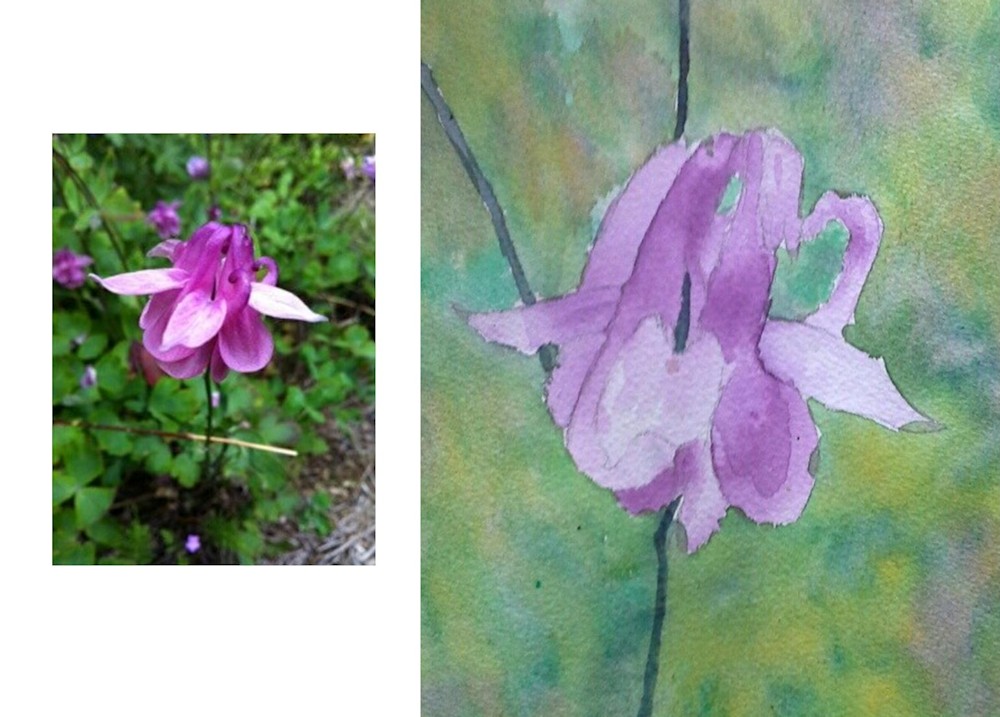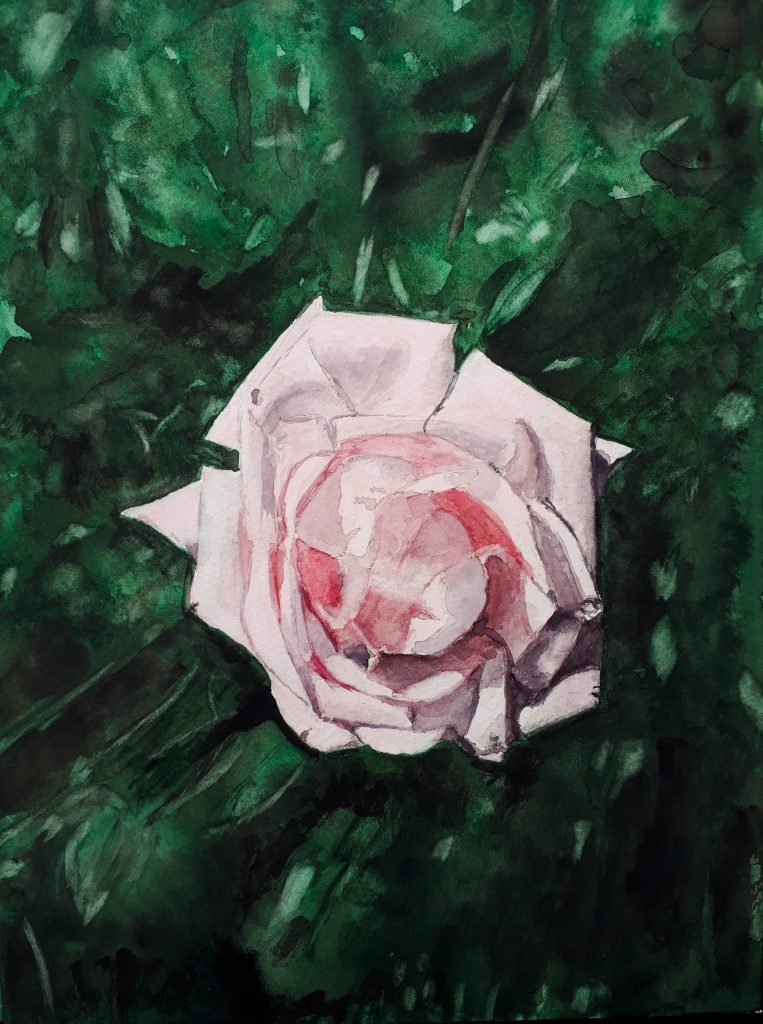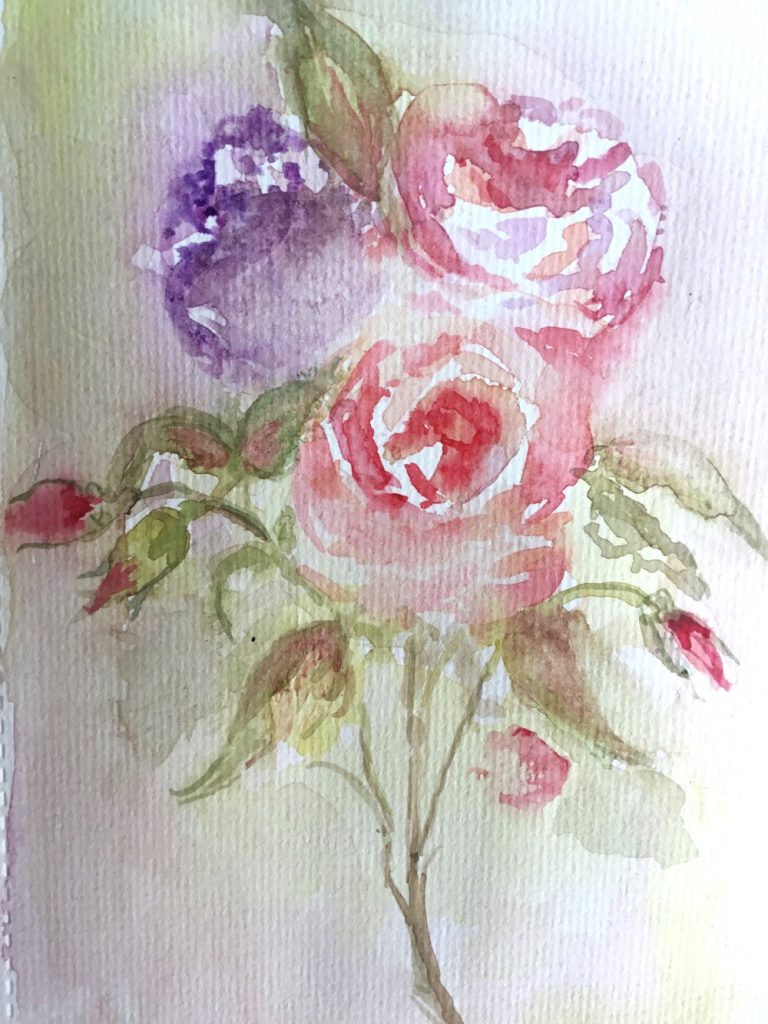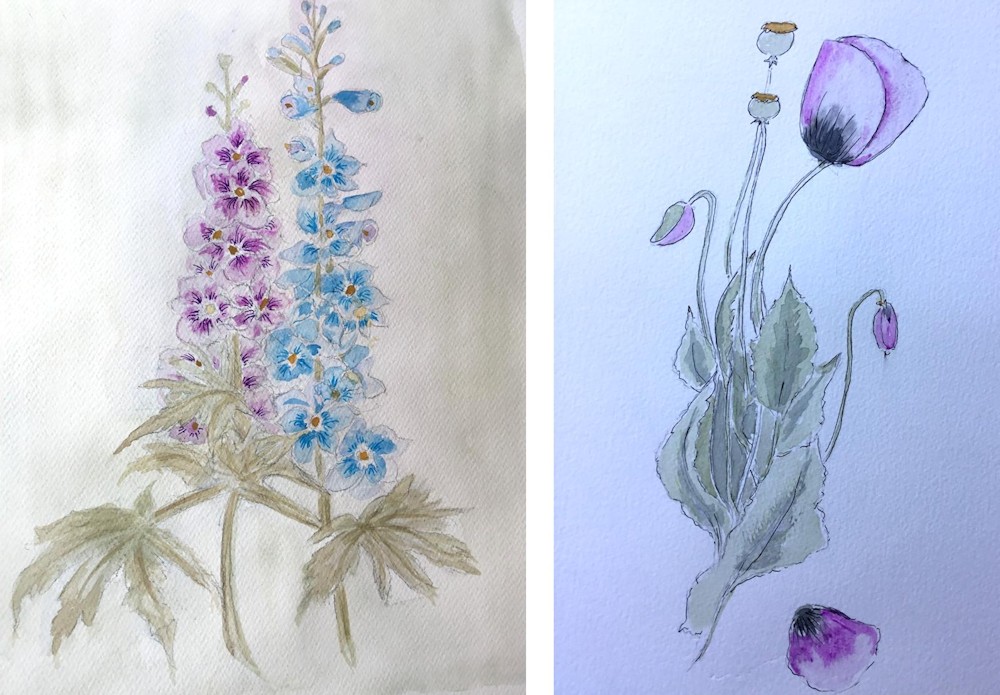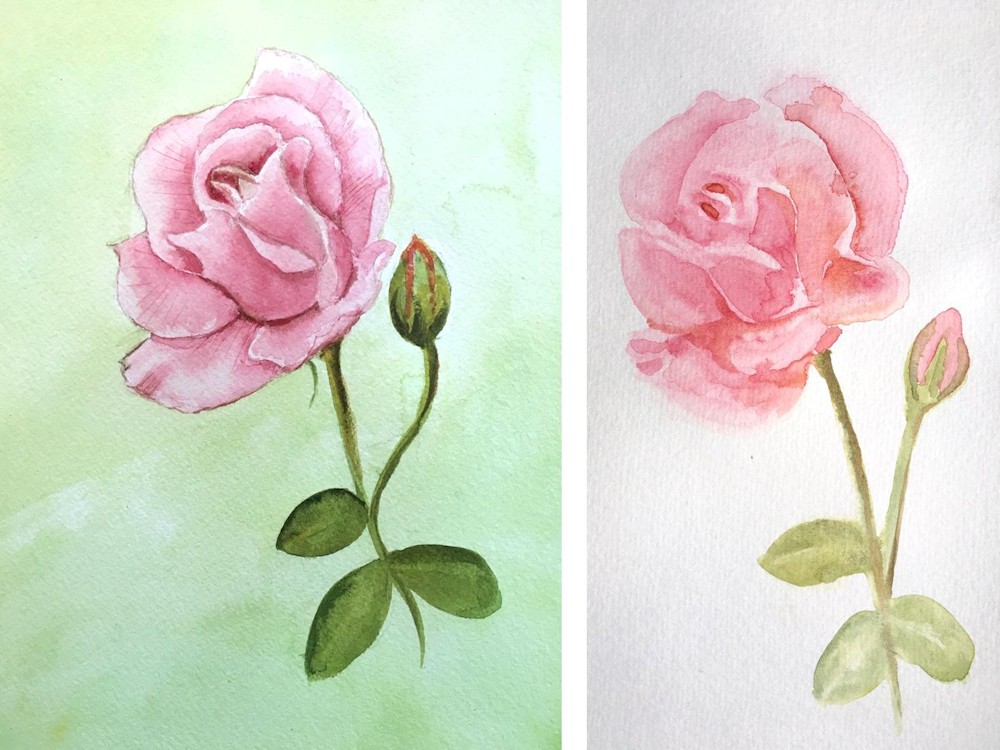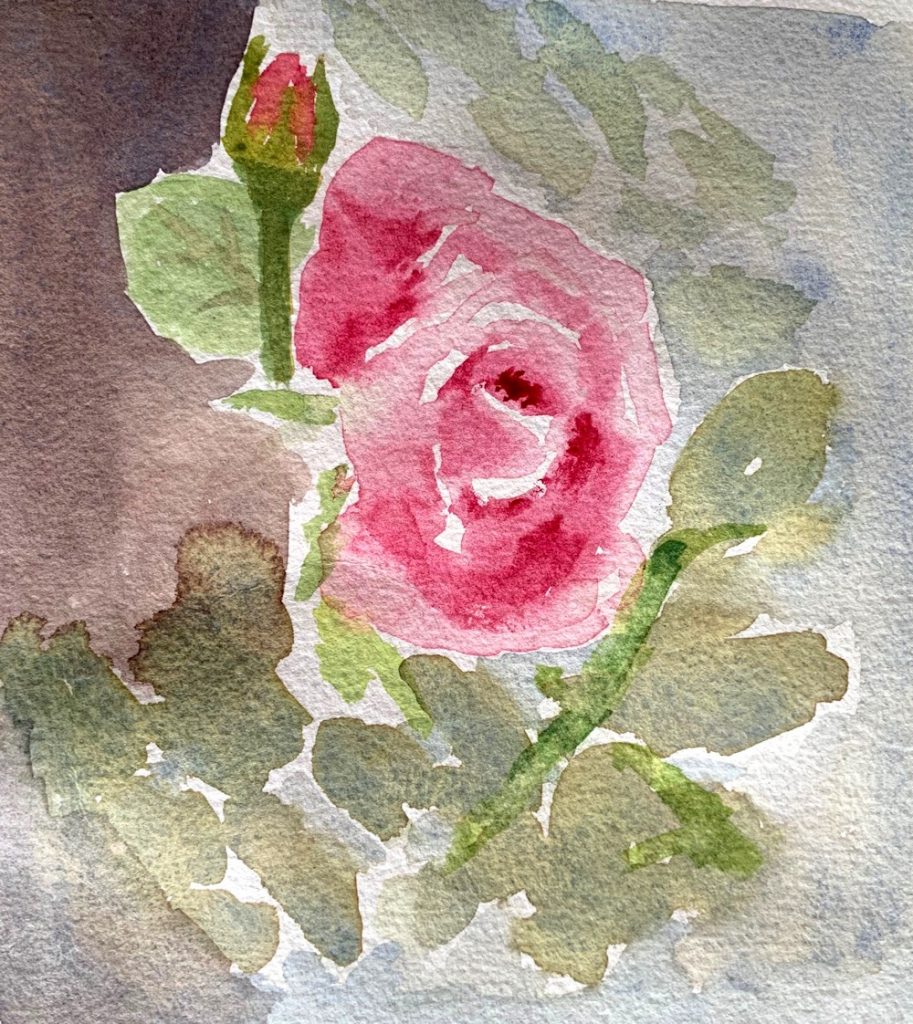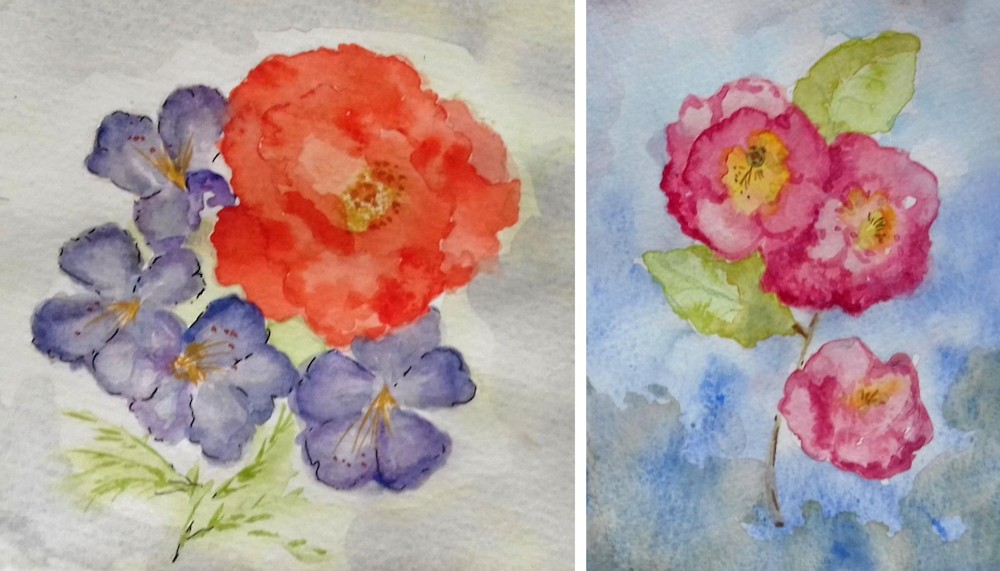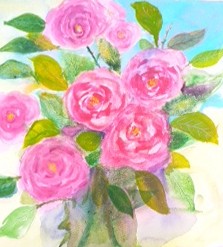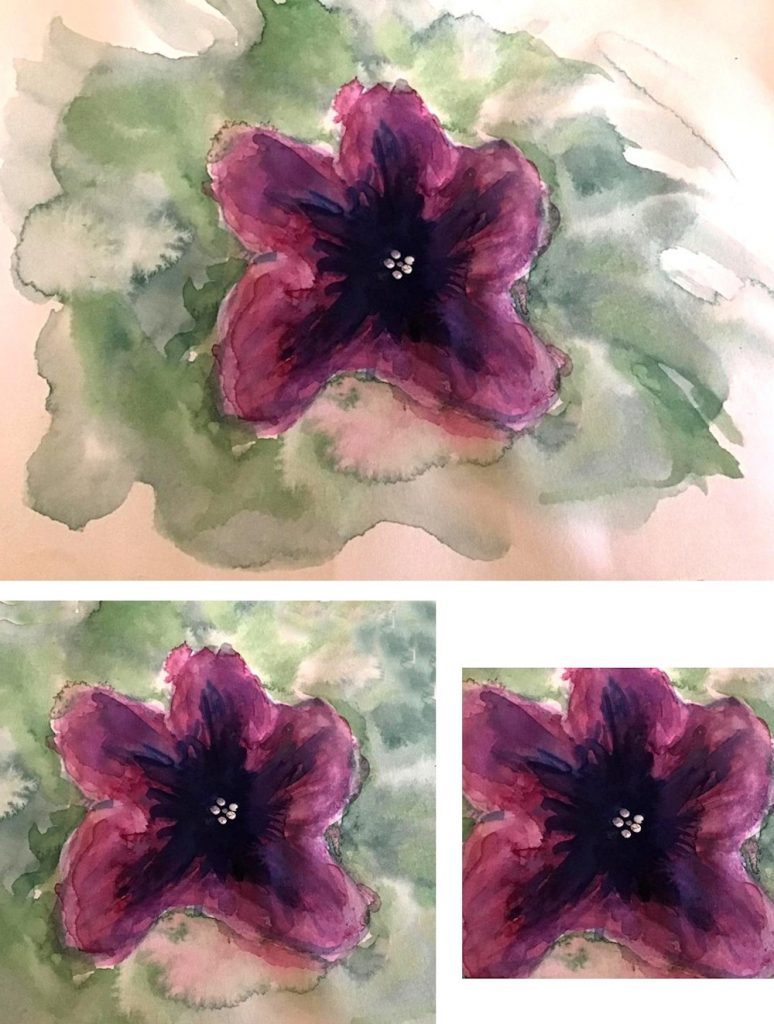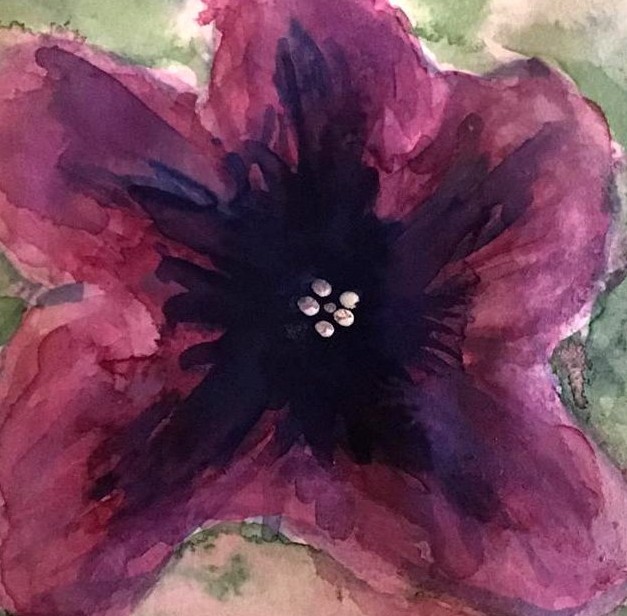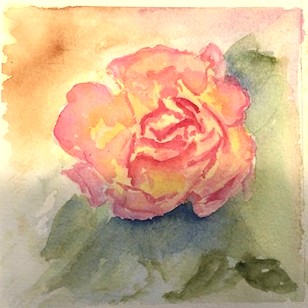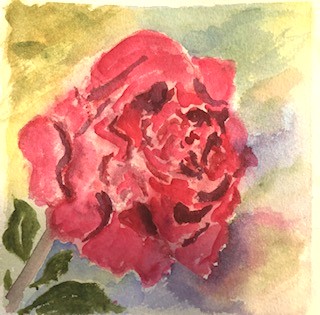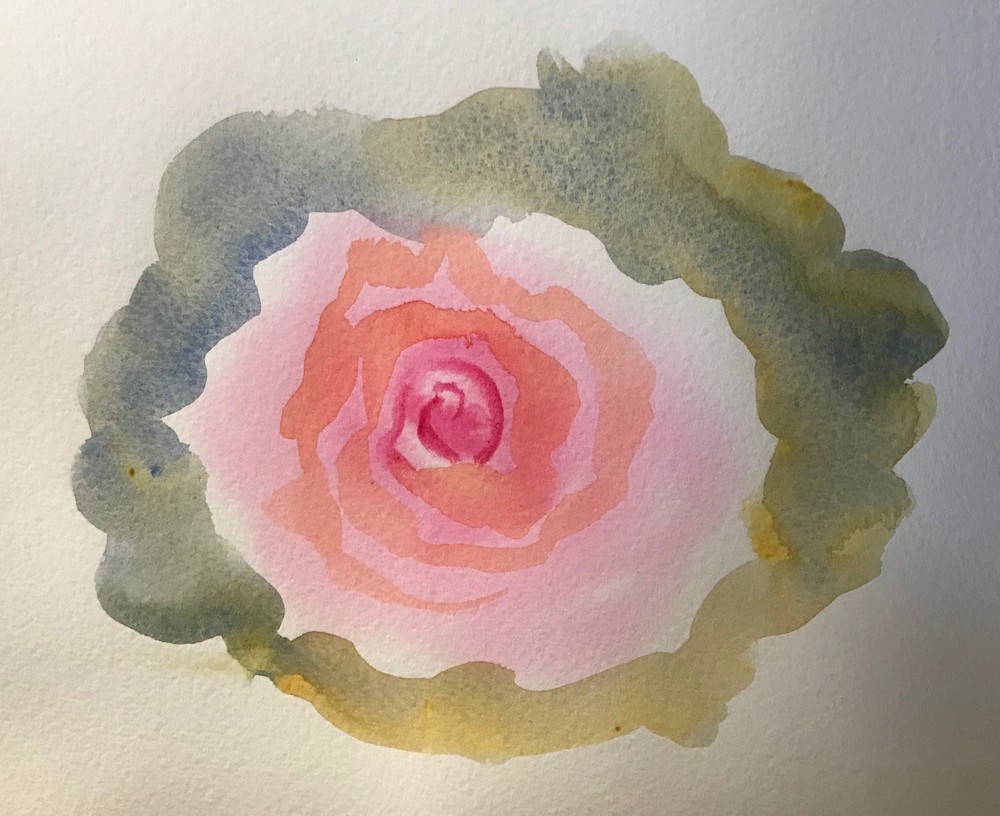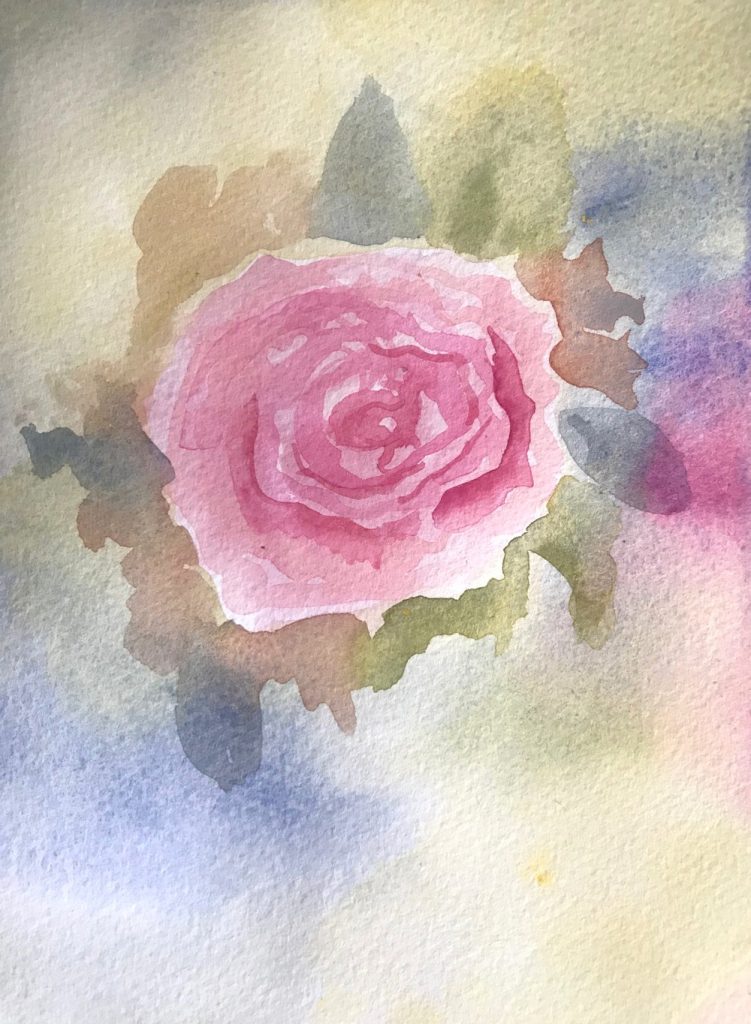Paint a Flower in watercolour: wet in wet or wet on dry?
May 25, 2020
One of the best things about watercolour is that it runs and to get some of the most exciting results it’s a good thing to take a few risks. As a bit of a control freak (where paint is concerned) I have found it as daunting as any one, but with a little practice I can now let my paint run without it getting out of control. I have chosen flowers for this week’s challenge, simply because they are beautiful and abundant and offer good scope for trying some elements of wet in wet technique.
Much of this painting was made wet in wet and the lines were made by indenting with a cocktail stick while the wash was very wet so that the pigment flowed into the groove. This could have been done with the handle of my brush. a fine embossing tool or any fine object that would dent but not tear the paper.
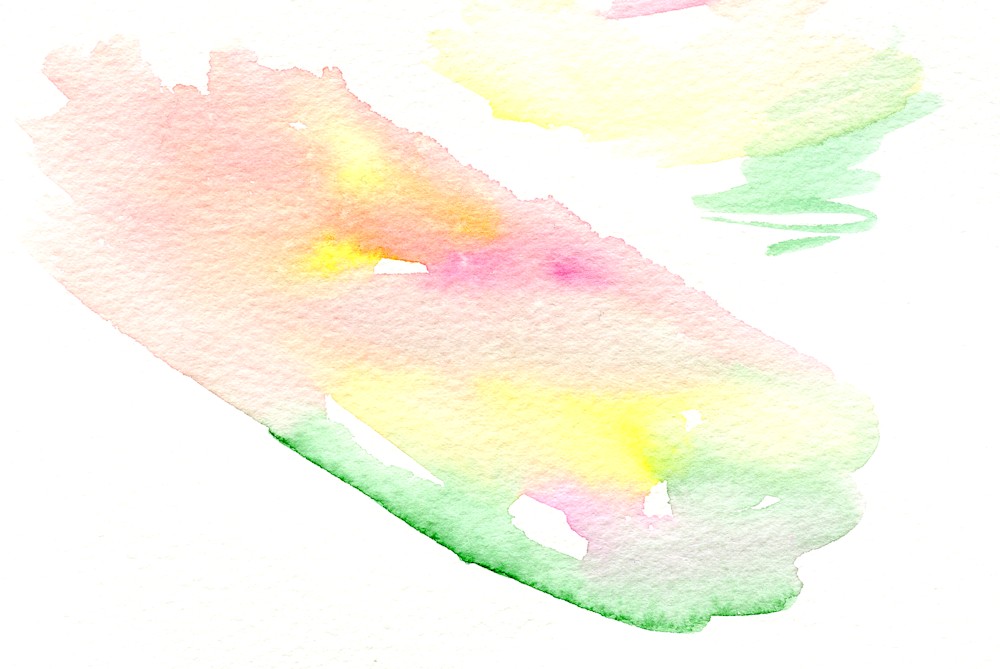
Pigments for pink roses in my garden; Crimson Alizarin, Schminke Olive Green Permanent, Cadmium Lemon
One of the first considerations when painting flowers using any technique is to decide on the palette that best suits them and the mood you wish to convey. The dark rose above was painted with Alizarin Crimson, French Ultramarine and Cadmium Lemon. The very fresh looking pink rambler was again painted with the same red and yellow but handled with a much lighter touch and I used a Schminke Olive Green Permanent mixed in places with the red and yellow. Unlike some olive green pigments this one is a fresh green which was exactly right for this rose. Usually I mix my greens but there are no rules just observation and experimentation.
Although I have chosen roses for the examples feel free to choose any flower but I would like you to paint from life and to use the brush rather than draw with pencil before painting. This seems harsh but will lead you to a freer technique with your painting and/or improve your brush skills enormously!
This rose started with a few arc shaped swirling brushstrokes that I gradually dropped colour into while the paper was still wet. I worked out from the centre until the whole paper was wet. I left this wash to dry before rewetting areas of the paper and dropping in more colour and lifting colour where needed. I left the second wash to dry then added foliage on some wet and some dry paper. At this stage I was unhappy, left the whole thing to dry, rewetted some of the rose and much of the rest of the paper but left some dry and then dropped in some crimson Alizarin and Ultramarine which gave it a rich rather than fresh look. I allowed myself to go on an untried journey, making mistakes but learning all the time.
The yellow rose below was painted with a much warmer palette of Indian Yellow, Scarlet Vermilion, French Ultramarine and Burnt Sienna. I came across this combination recently from the artist Trevor Waugh and would encourage you to look at his flower paintings and also those of Paul Riley. When you have chosen your flower, try colour mixes with three or four pigments at the most to find which will work best. Do look at the leaves and stem too as very often the colours in the flower occur in lesser quantities in the leaves and stem. Experiment by trying out various pigment combinations and find out how your pigments behave on their own, in varying degrees of dilution, and then seeing how they mingle when allowed to flood into each other as well as how they act when mixed in the palette.
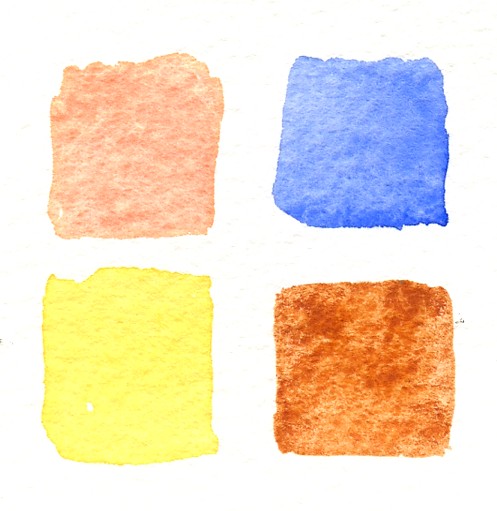 Clockwise: medium to pale washes of French Ultramarine, Burnt Sienna, Indian Yellow and Scarlet Vermilion. Sadly the Indian Yellow here appears too lemon; it is in fact a lovely warm yellow.
Clockwise: medium to pale washes of French Ultramarine, Burnt Sienna, Indian Yellow and Scarlet Vermilion. Sadly the Indian Yellow here appears too lemon; it is in fact a lovely warm yellow.
When working by dropping pigments on to each other while wet or dropping pigment on to wet paper the results are not always as expected; quite often the pigments mingle rather than mix as they do when agitated in a palette. Dropping pigment in to wet paper creates a very fresh look especially useful for delicate petals.
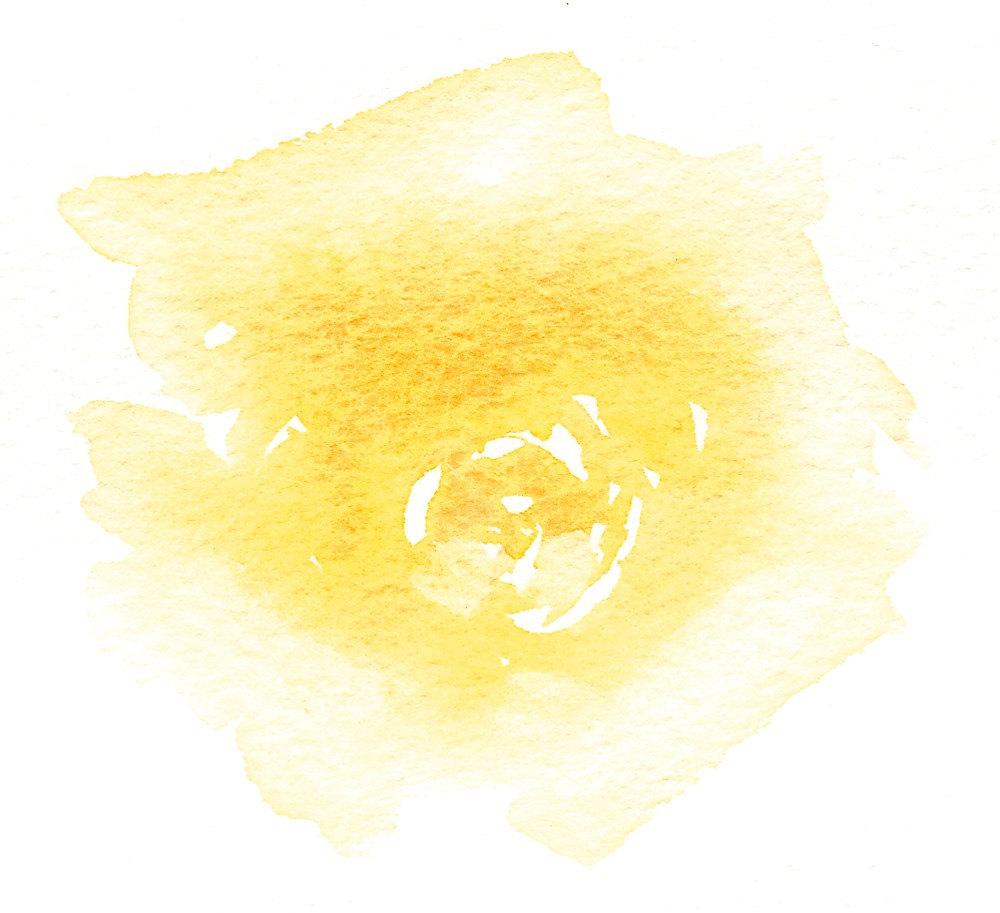
First trial wash for the yellow rose. I loaded a large pointed round brush with a fairly dilute wash of Indian Yellow and made spiral marks that echoed the shape of the rose leaving some paper bare. I diluted the wash as I worked outwards wetting much of the paper. I then returned to the still wet centre of the flower and dropped in more yellow and a little Scarlet Vermilion.
Colours decided I then mix up quite a quantity of the washes I wish to use and have the same pigments squeezed out or on wetted pans so that more concentrated colour can be quickly lifted when needed. When working with very wet colour always test the strength of your wash as watercolour always looks darker when wet. Having said that go quite gently when working with pale flowers.
Suitable papers for this way of working are NOT or Rough watercolour paper 300gsm or more in weight. If you are working on a small scale you may not need to stretch papers over 300gsm and this certainly is not necessary for experimenting with your colours. If you work very wet for your final paintings either stretch your paper or work on a block unless you have paper about 425 gsm and above or are prepared to work with less controllable washes and stretch your paper from the back afterwards.
With roses I often start by loading a large pointed round brush with pigment and making strokes that follow the petals as they spiral outwards; a series of arcs that describe the form of the flower, leaving little gaps where the palest areas are and loading my brush with more water as I work outwards till, if I wish to drop a background in I continue till the whole paper is wet.
I may at this stage drop some pale pigment into the centre of the flower and the same or other pigments into the background. As the wash dries I can continue to drop more pigment in, becoming gradually much more strategic about where, and lifting out pigment in places where needed. It’s hard to put all this into words so I hope the images will help and give you some ideas about how you may like to work.
After getting the first wash down with at least some some wet in wet passages, I let it dry, then re-wet the paper where I want to deepen the colour by dropping more pigment in, or work wet on dry to add leaves and stems. Another good tip when rewetting paper is to rewet a much larger area than you intend to deepen with more colour. It is much easier to avoid unwanted hard edges. It is also a good idea to work leaves with a large brush so that the shape can be described with one or two stokes. The paper will still be damp enough for you to drop more colour or a different colour into your leaf before it dries. As with everything practice on another piece of paper first.
Gradually build your painting up till you are happy with it but be prepared for accidents that happen with washes. Also work in the knowledge that you can soften an edge after it has dried with a brush, damp natural sponge or a piece of tissue paper after re-wetting the area. You can also lift out pale areas of petals and or background in the same way.
The number of pigment combinations possible is enormous but I do recommend you use only three or four pigments for the whole of each painting. Try to find how many colours your can make from the pigments you choose and think about whether you need a cooler red or a more lemon yellow etc for your particular flower. Experiment with all the pigments in your box then select your three or four. At first I would not advise using black or Payne’s grey as such beautiful neutrals can be mixed, and result in a more unified work.
Don’t listen to the words, look at the pictures, observe your flowers, pick up your paints and have fun!
Your Paintings:
